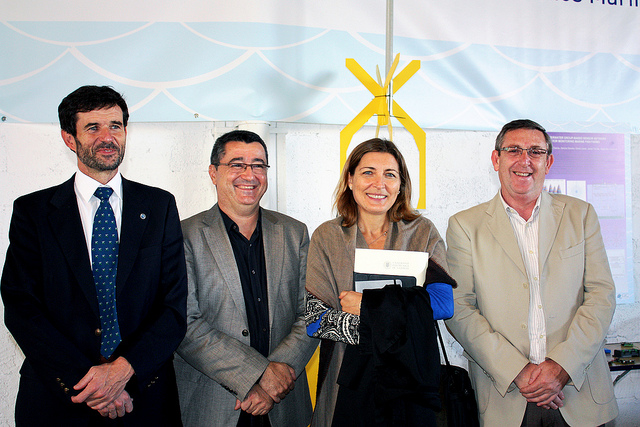What is the IGIC?
An important part of the research that takes place on the Campus Gandia occurs in the Research Institute for Integrated Coastal Zone Management (IGIC). Made up of 70 researchers from Campus Gandia, it was inaugurated in 2007 to actively promote and conduct scientific research of excellence in:
- Knowledge of the environment and ecosystems
- Development of ICT tools for monitoring and evaluation
- Environmental planning and natural resource management
The results and applications obtained from the research are intended for their dissemination – the scientific output of IGIC can in fact be consulted online – and to contribute to the training of experts specialized in the areas of research. In addition, the institute collaborates with the scientific dissemination and outreach initiatives organized by the UPV.
The importance of protecting our coasts
Integrated management has emerged as the needed mechanism to ensure sustainable development of coastal areas, a complex area both from the physical and socioeconomic perspectives. For this reason, the EU has recognized coastal areas as particularly sensitive habitats that are important for human settlements, productive activities, biodiversity and natural resources.
To work towards this ambitious goal, the main objective of IGIC over the years has been to promote the creation of a multidisciplinary team that has increased the possibility of conducting large-scale research projects. In this way, the team members are meeting the goal of making the Institute for Integrated Coastal Zone Management a standout center in its field and a pole of attraction for businesses and institutions due to the applicability of the results of their research projects.
What research groups make up the IGIC?
- Environmental planning and natural resource management
- Tourism Management
- Socioeconomics
- Development of ICT tools for monitoring and evaluation
- Underwater Acoustics
- Communications and Networks
- Sensors and Magnetism
- Acoustic Particle Detection
- Waves in Complex Systems
- Analytical Chemistry
- Mathematical and Statistical Applications
- Knowledge of the environment and ecosystems
- Ecology
- Coastal Oceanography
The Institute develops projects from different fields:
- IGIC and Environmental Sciences (video with English subtitles)
- IGIC and Telecommunications (video with English subtitles)
- IGIC aand Tourism (video with English subtitles)
IEO-UPV Joint Unit
The IEO-UPV Joint Research Unit in Technology for Marine Studies (UTEM), located in the warehouses of the port of Gandia, was born of the union between the technological capabilities of the Polytechnic University of Valencia and the needs of the Spanish Institute of Oceanography, a national agency dedicated to marine scientific research.

It began operation in 2010 with the support of the Gandia Local Council and the backing of the Port Authority, and consists of 50 researchers from the UPV and 25 from the IEO. The UTEM is working on the development of technological tools and new methods of study in three areas: aquaculture, study of the marine environment, biodiversity, and fishery resources.
The UTEM is noted for its multidisciplinary approach that enables scientists to respond to the challenges posed by new Spanish and European policies such as the Marine Strategy Framework Directive, the new Common Fisheries Policy and the Water Framework Directive.
The creation of the joint unit has been a qualitative change that has permitted the IGIC to take on larger research projects and join forces with a group of prestigious and experienced researchers from the IEO. It has also meant higher standards for the work of all the participants, but the ROI is more than satisfactory, placing both the Campus and the city in an excellent scientific position. Few European cities the size of Gandia can provide structures of this kind that promote the union of human and technological capabilities.

